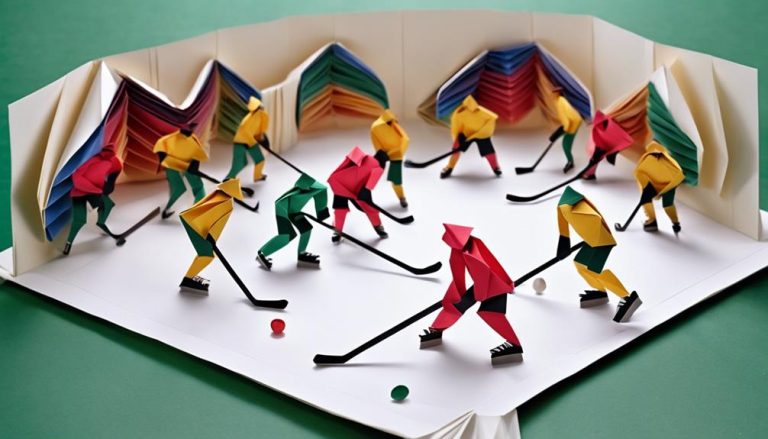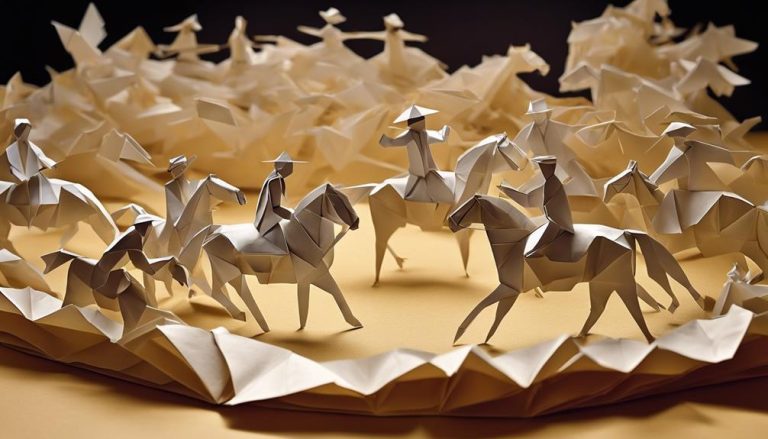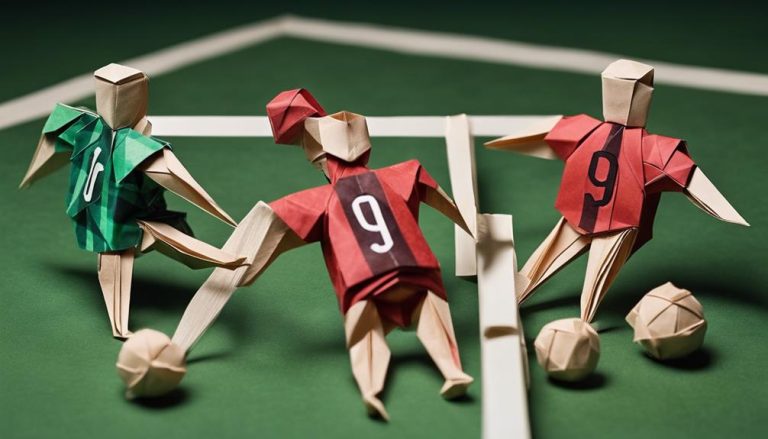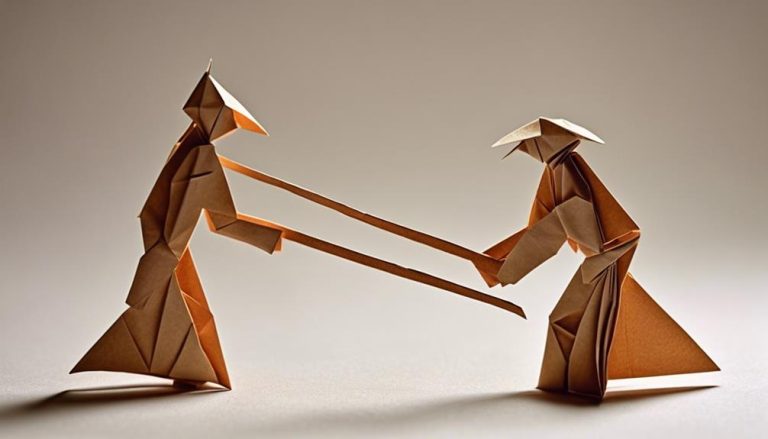General Rules of Synchronized Skating
In synchronized skating, the rules act as the guiding compass, steering teams towards harmony on the ice. From the intricacies of formation requirements to the precision of element criteria, each aspect plays a crucial role in creating a captivating performance. But what truly sets apart the exceptional teams lies in their ability to not just adhere to these rules, but to elevate them. As you navigate through the regulations governing music, costumes, and judging standards, you'll discover the fine line between compliance and artistry that can make all the difference in the eyes of the spectators and judges alike.
Formation Requirements
When forming a synchronized skating team, it is crucial to ensure that each skater understands and executes their specific role within the formation accurately. Skating techniques play a vital role in the success of the team. Each team member must master not only individual skills but also how to synchronize these skills with the group. Whether it's mastering crossovers, edges, or turns, a strong foundation in skating techniques is essential for seamless teamwork.
Team dynamics are equally important. Understanding how each skater contributes to the overall performance is key to achieving a harmonious and synchronized routine. Communication, trust, and camaraderie among team members can significantly impact the team's cohesion and performance. Choreography is the heartbeat of synchronized skating. Every movement, transition, and formation change must be meticulously planned and executed. Each skater must not only understand their role within the choreography but also how it fits into the larger picture of the routine.
Spacing accuracy is another critical aspect of formation requirements. Skaters must maintain proper spacing to ensure visual appeal and prevent collisions. Precision in maintaining formation not only enhances the aesthetics of the routine but also ensures safety during fast-paced sequences. By focusing on skating techniques, team dynamics, choreography, and spacing accuracy, synchronized skating teams can elevate their performances to new heights of excellence.
Element Criteria
To understand the Element Criteria in synchronized skating, it is crucial to delve into the specific technical requirements that define the quality and execution of each element. In synchronized skating, the Element Criteria play a vital role in evaluating the performance of teams. Here are three key points to consider:
- Skating Skills and Synchronization: The judges closely assess the skating skills of each team member, looking for strong edges, power, and control. Synchronization is paramount, requiring skaters to move as one unit, perfectly aligned in formations and transitions. The ability to maintain precise timing and spacing enhances the overall visual impact of the performance.
- Creativity and Innovation: While adhering to the set elements, teams are encouraged to showcase creativity and innovation. This includes unique formations, creative transitions, and original choreography that sets them apart from other teams. Teams that push the boundaries of traditional synchronized skating with fresh ideas often leave a lasting impression on the judges and audience.
- Execution and Precision: Each element must be executed with precision and attention to detail. Clean entry and exit points, accurate formations, and seamless transitions contribute to a polished performance. Teams that pay meticulous attention to these aspects demonstrate a high level of professionalism and dedication to their craft.
Music Regulations
The adherence to specific music regulations is a crucial aspect of synchronized skating competitions, ensuring a fair and standardized evaluation process for all teams. When it comes to music selection, teams must pay close attention to the guidelines to showcase their choreography creativity and musicality effectively. Skaters' synchronization and timing are heavily reliant on the music chosen, making it a pivotal element in their performance.
To help you understand the importance of music regulations in synchronized skating, let's delve into a detailed table outlining key points:
| Music Regulations in Synchronized Skating | Details | Importance |
|---|---|---|
| Music Length | Must be within specified time limits | Ensures fairness in comparison |
| Originality | Avoid using music with explicit lyrics | Promotes a positive and family-friendly image |
| Tempo Changes | Smooth transitions are encouraged | Enhances the flow of the performance |
| Music Cuts | Cleanly edited for seamless routines | Maintains the fluidity of the choreography |
| Licensing | Ensure legal rights for music usage | Respects intellectual property rights |
Costume Guidelines
Adhering to specific costume guidelines in synchronized skating competitions is paramount for maintaining the aesthetic integrity and professionalism of performances. When it comes to designing costumes for synchronized skating routines, there are several key considerations to keep in mind.
- Design Inspiration: Costumes should be inspired by the theme or concept of the routine. Whether it's a classical piece or a modern interpretation, the costumes should align with the music and choreography to enhance the overall performance.
- Performance Impact: The choice of fabric, color, and style can significantly impact the performance. Fabrics that flow gracefully with movement or sparkle under the lights can add visual appeal and make the skaters stand out on the ice.
- Cohesiveness: It's essential for all team members to have cohesive costumes that create a unified look on the ice. While individual elements can showcase each skater's personality, the overall ensemble should create a harmonious visual effect.
Designing costumes for synchronized skating is an art form that requires attention to detail and creativity. By drawing inspiration from the routine's theme and considering the performance impact of costume choices, teams can elevate their presentation and leave a lasting impression on judges and audiences alike.
Judging Standards
When evaluating synchronized skating performances, judges meticulously assess technical execution, artistic interpretation, and overall presentation to uphold the sport's high standards. The scoring system in synchronized skating is designed to fairly evaluate teams based on both technicality and artistry. Technical execution involves elements such as precision, difficulty, and synchronization of movements. Judges pay close attention to the accuracy of formations, transitions, and the difficulty of the elements performed.
Artistic interpretation plays a crucial role in setting apart top-performing teams. Teams are expected to convey a theme or story through their performance, showcasing creativity, musicality, and emotional expression. Judges evaluate how well the music is interpreted through the choreography, the team's expression, and the overall performance quality.
Balancing technicality and artistry is essential in synchronized skating judging standards. While technical elements are necessary to demonstrate skill and precision, artistry adds depth and entertainment value to the performance. Judges aim to reward teams that excel in both technical execution and artistic interpretation, creating a harmonious blend that captivates the audience.
Frequently Asked Questions
How Do Skaters Communicate With Each Other During a Synchronized Skating Routine?
To synchronize effectively, skaters rely on non-verbal cues and teamwork. Signals help in flawless formation changes. By understanding each other's movements, you seamlessly flow as one. Trust in your teammates and communicate through the ice.
Are There Any Specific Rules Regarding the Age Range of Skaters in a Synchronized Skating Team?
When it comes to synchronized skating teams, age requirements vary based on skill levels. Different categories may have specific age ranges to ensure fair competition and showcase a diverse range of talent. It's all about balancing experience and enthusiasm.
Can Synchronized Skating Teams Incorporate Props or Special Effects Into Their Routines?
You can definitely incorporate props or special effects into synchronized skating routines to enhance creativity and choreography. Adding innovative elements like props or effects can elevate the performance and captivate the audience with unique visuals.
How Do Synchronized Skating Teams Handle Injuries or Substitutions During a Competition?
When faced with injuries or needing substitutions during a competition, synchronized skating teams manage the situation through clear communication and a strong understanding of team dynamics. This ensures seamless transitions and maintains performance quality.
Are There Any Restrictions on the Number of Teams That Can Compete in a Synchronized Skating Competition?
In synchronized skating competitions, the number of teams allowed to compete may vary depending on the event. Team size and participant limits are often outlined in the competition rules and entry requirements, ensuring a fair and organized competition experience.






